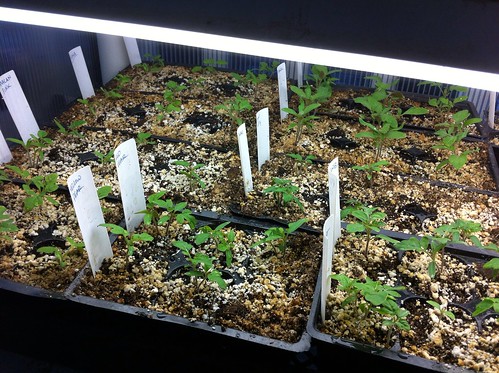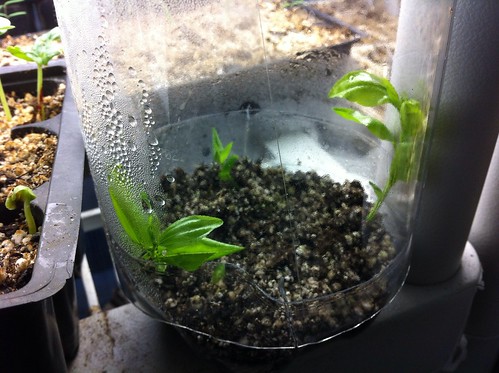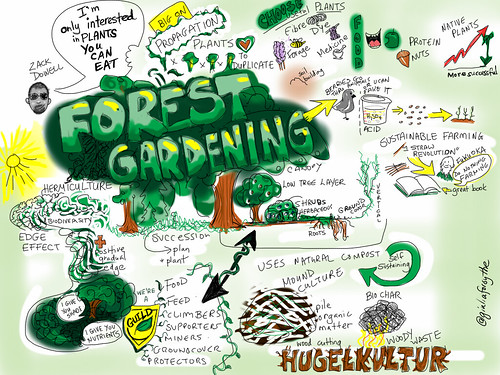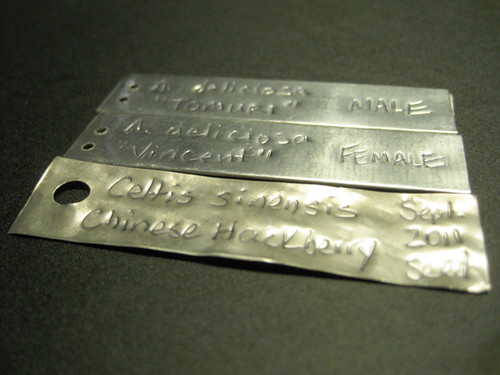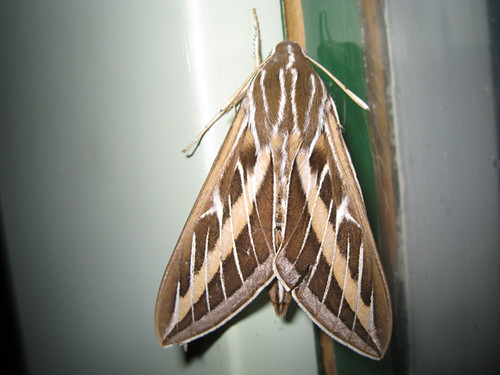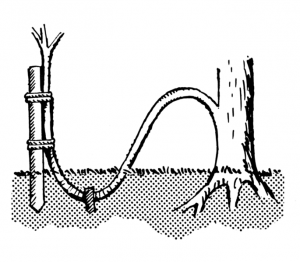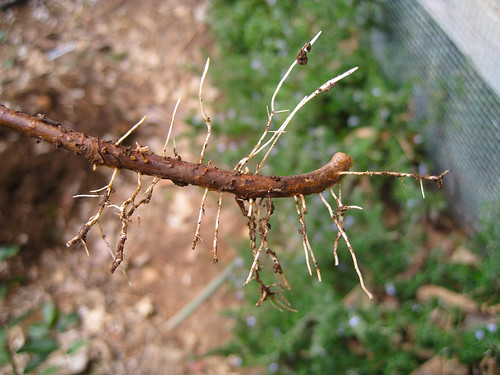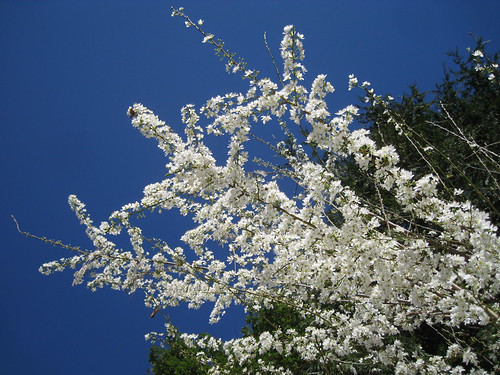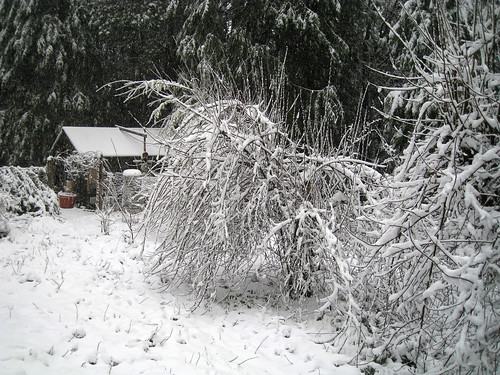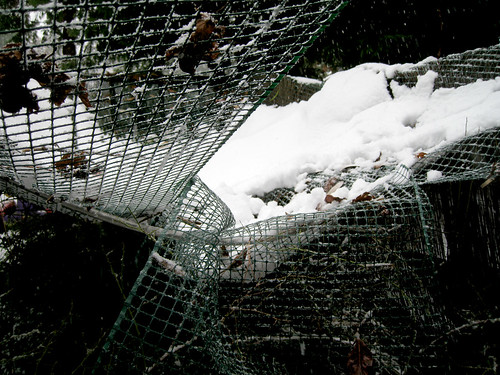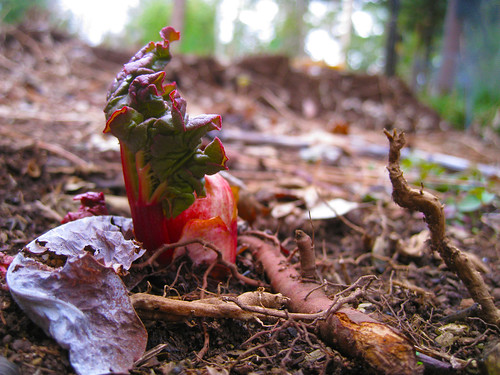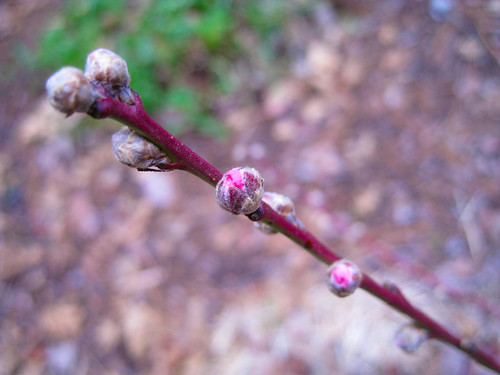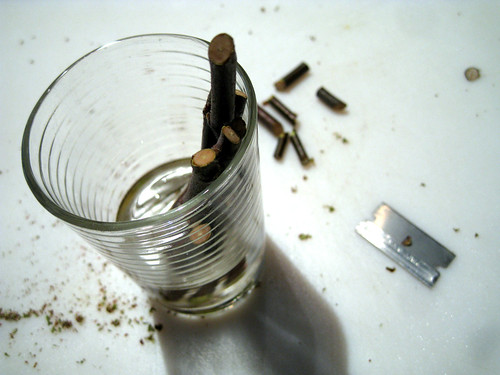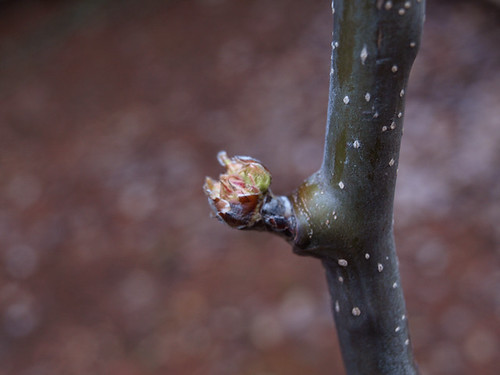 Despite recent snows and heavy rains, signs of spring continue to appear in the garden. The 4-in-1 Asian pear I planted a few weeks back is leafing out and breaking bud. It’s an interesting one, as each of the four branches seems to have its own way of doing things. I’m eager to see how this tree acts, how it flowers, how it leafs out. Three of the varieties, 20th Century, Chojuro, and Hosui, are listed as late mid-season harvest, with the fourth, Shinseiki, listed as early mid-season.
Despite recent snows and heavy rains, signs of spring continue to appear in the garden. The 4-in-1 Asian pear I planted a few weeks back is leafing out and breaking bud. It’s an interesting one, as each of the four branches seems to have its own way of doing things. I’m eager to see how this tree acts, how it flowers, how it leafs out. Three of the varieties, 20th Century, Chojuro, and Hosui, are listed as late mid-season harvest, with the fourth, Shinseiki, listed as early mid-season.
In other news, the asparagus is really kicking into gear, and I imagine that there will be spears for eating within a week or so. It’s heartening to see some of the small crowns I planted just last year pushing growth, which means they lived through year one and are hopefully well rooted and happy in their current locale.
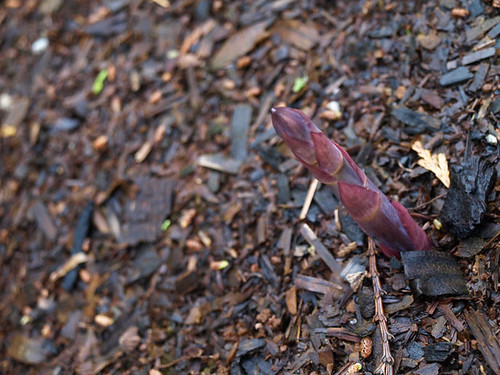 I find it interesting that they’re coming up red, as they aren’t red varieties. I wonder if that has to do with temperature, or age, nutrition, or soil chemistry? In any case, I think they’re quite lovely, and they have little chance of making it into the kitchen, as I much prefer to simply eat them raw, sweet and tender and with just the right bite, straight from the ground. Last year was a miserable year for asparagus, so I’m hoping that this one will be productive.
I find it interesting that they’re coming up red, as they aren’t red varieties. I wonder if that has to do with temperature, or age, nutrition, or soil chemistry? In any case, I think they’re quite lovely, and they have little chance of making it into the kitchen, as I much prefer to simply eat them raw, sweet and tender and with just the right bite, straight from the ground. Last year was a miserable year for asparagus, so I’m hoping that this one will be productive.

